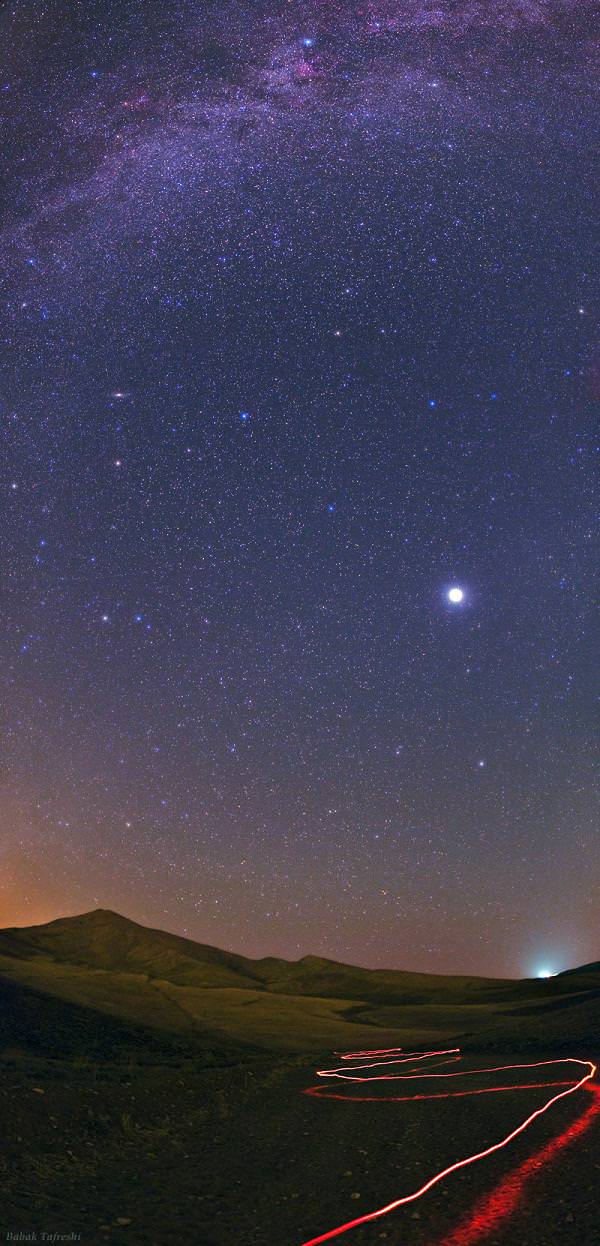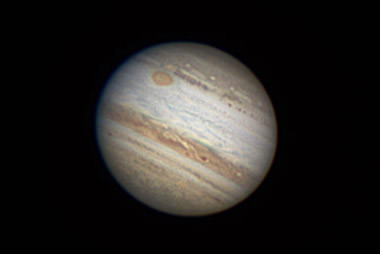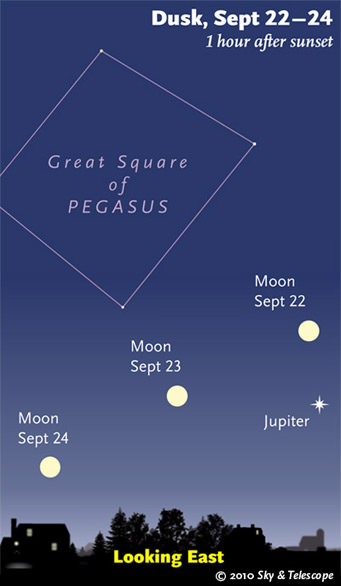[/caption]
Look! Up in the sky! Is it a bird? Is it a plane? No… It’s super Jupiter! “Jupiter is always bright, but if you think it looks a little brighter than usual this month, you’re right,” says Robert Naeye, editor in chief of Sky & Telescope magazine. “Jupiter is making its closest pass by Earth for the year. And this year’s pass is a little closer than any other between 1963 and 2022.”
Where do you find Jupiter? Try about 368 million miles away and (for most observers) low to the southeast after the skies get dark. The giant planet will reach its nearest point to us on the evening of September 20, 2010 – but will remain one of the brightest objects in the night through the end of the month.
Why does Jupiter appear to be more luminous now than at any other time? Although the varying distances over the years may seem marginal – about 10 to 11 million miles over a period of around 60 years – it translates into significance when it comes to magnitude factors. At its brightest, Jupiter can reach –2.94, and dimmest at -1.6. Just a 1% distance change can mean either 4% brighter or dimmer!
The mighty Jove has also undergone some cosmetic changes in the past year as well, making it an additional 4% brighter than usual.
For nearly a year the giant planet’s South Equatorial Belt has slowly been covered by a highly reflective ammonia cloud. Normally the SEB appears to be brown, a result of Jupiter’s chemical compounds reacting to the Sun’s ultraviolet light. Known as “chromophores”, these chemicals are known to mix with lower cloud decks and just a few stormy days could mean rising convection cells are forming crystallized ammonia – masking the light absorbing dark zone and adding to reflectivity.
Of course, a close pass doesn’t mean Jupiter is going to appear to be the size of the Moon – nor be as bright – but it’s certainly going to make a grand appearance on the nights of September 22 and September 23 when it joins Selene on the celestial scene!
But that’s not all that’s happening here. According the Sky & Telescope Magazine: Jupiter and Uranus find themselves close to the point on the sky known as the vernal equinox, where the Sun crosses the celestial equator on the first day of spring. (“Spring” here means spring in the Northern Hemisphere.) And, all of this takes place around the date when fall begins in the
Northern Hemisphere: on September 22nd. (Fall begins at 11:09 p.m. Eastern Daylight Time on that date.)
What do all these coincidences mean? “Nothing at all,” says Alan MacRobert, a senior editor at Sky & Telescope. “People forget that lots of things are going on in the sky all the time. Any particular arrangement might not happen again for centuries, but like the saying goes, there’s always something. Enjoy the show.”
Image Credits In Order of Appearance: Babak A. Tafreshi, Sky & Telescope magazine / Sean Walker and visualization courtesy of Sky & Telescope magazine.




If I’m not mistaken, it should appear as large as the full moon.
/ducks and runs
sirius> yes, i’ve heard about it too. but that would be on the night of 22nd september ONLY! (and you must be looking through the loop of twice boiled hair of blind dog!)
VERY interesting that the, “South Equatorial Belt has slowly been covered by a highly reflective ammonia cloud..”
I wonder what Jupiter’s radio emissions have looked like during this period?
I wonder if anyone has made a comparative study of Jupiter’s ‘dissappeared’ SEB and Sol’s sunspots? It has been shown that sunspot numbers change Earth’s jet stream patterns… so why not on Jupiter?
http://www.nature.com/news/2010/100414/full/news.2010.184.html
In regard to my last comment. In the attached image, please note the latitude of the sunspots on Sol corresponds to the SEB on Jupiter?
http://spaceweather.com/images2010/17sep10/hmi1024_blank.jpg?PHPSESSID=kl52apo8jdu5satsorpelrr7v6
Oops… “… seems to correspond to the latitude of the SEB on Jupiter?
In case somebody missed it:
WE ARE ALL GOING TO DIIIIEEEE!!!!!!!!!!!!!!!!11111111111
Oh, and someone screwed the display by not closing the italics 😉